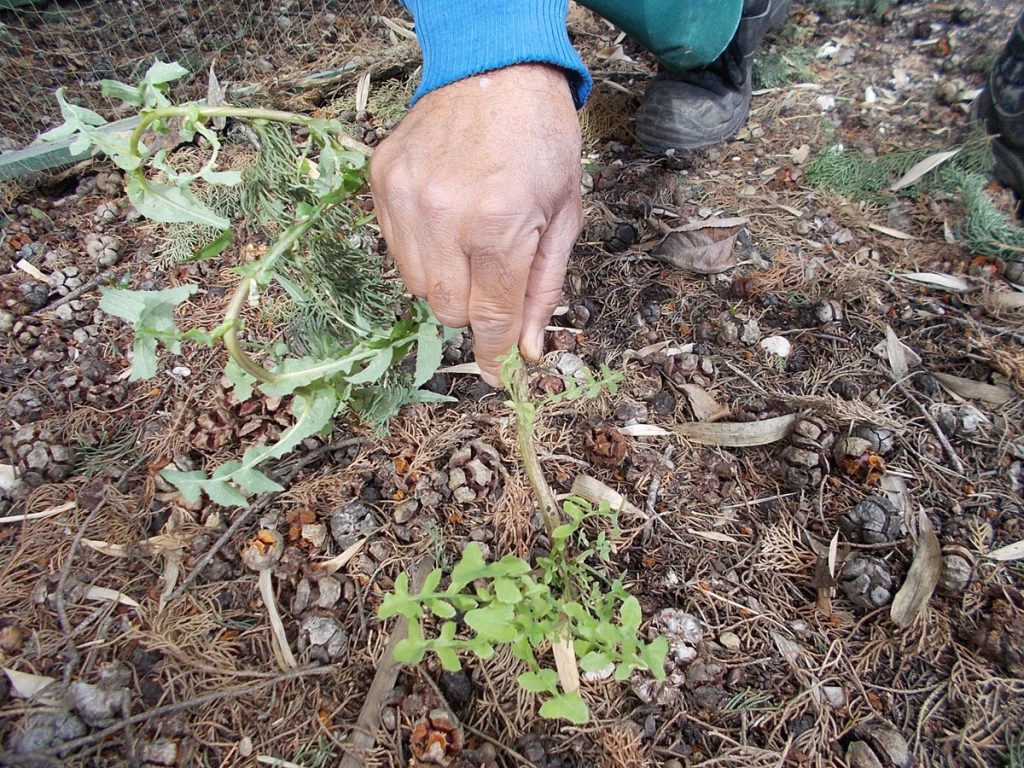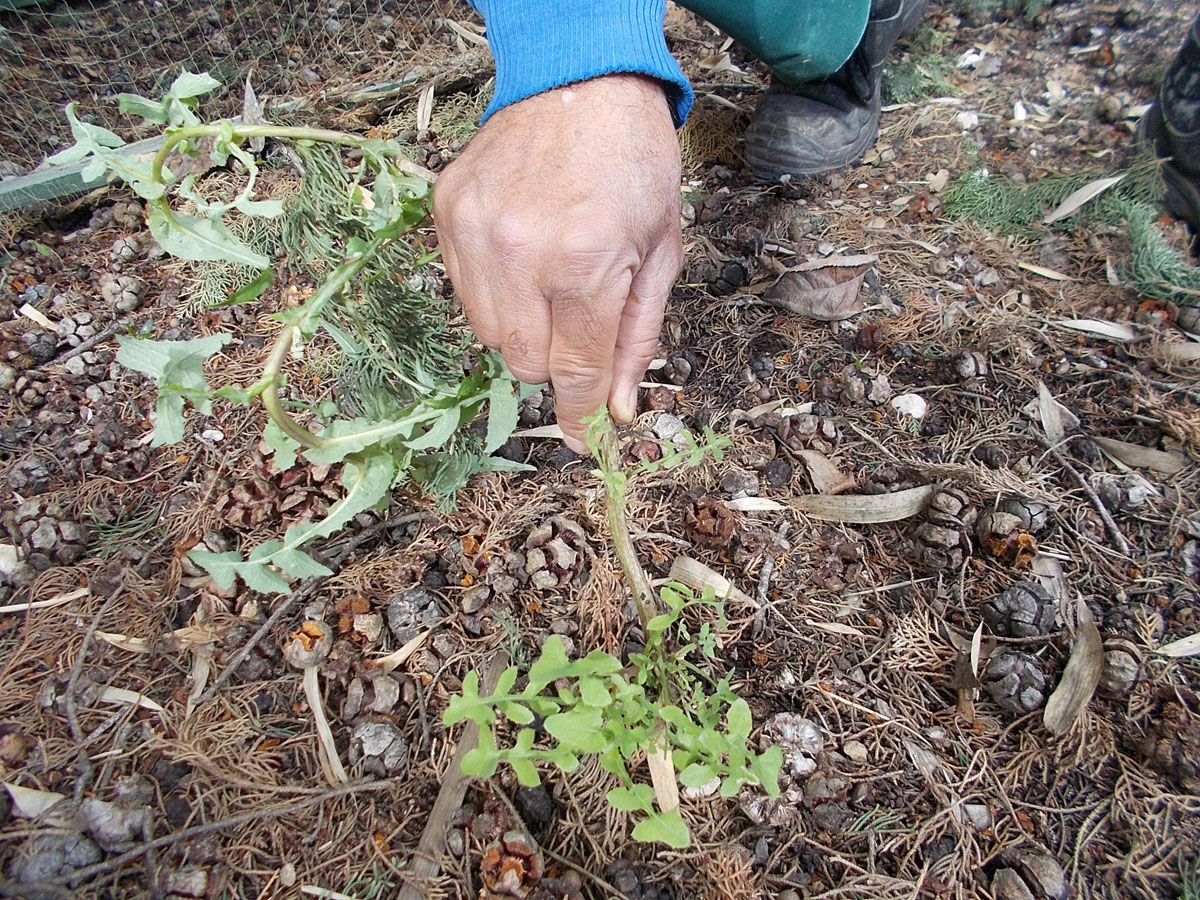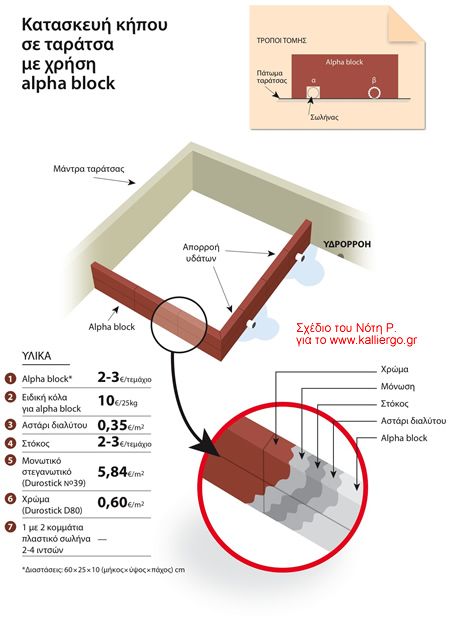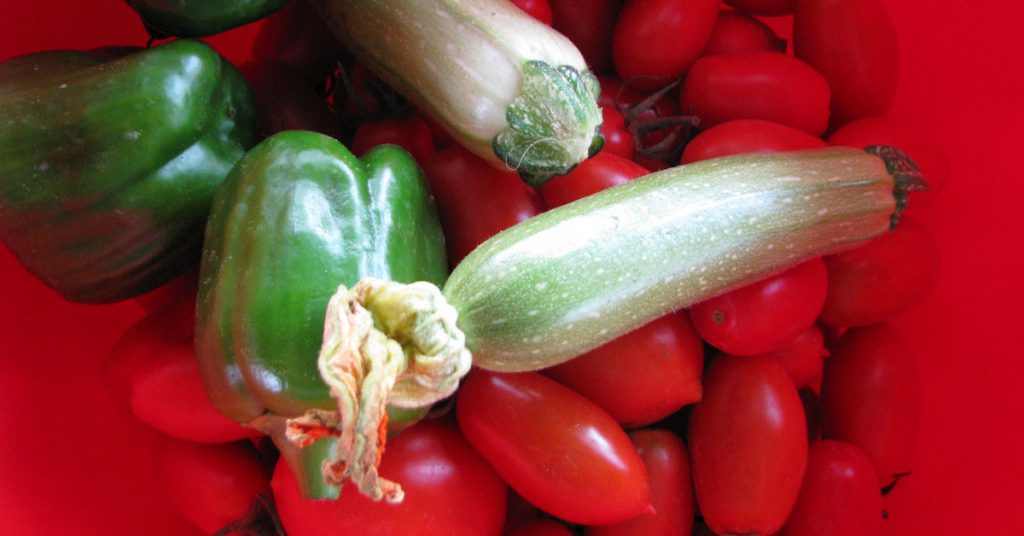In February we have a lot of work in the garden and the fields!
February, the last month of winter, is a month of preparation for spring! So before Spring arrives, we need to catch up on some urgent arboricultural work.
February in Greece and Europe is a month with a lot of rainfall, frost, but also some good days that we can use to prepare our garden and field for Spring.
Garden – Fields
In February we are weeding
- We prune our rose bushes, gardenias, hydrangeas and ornamental plum trees. (Ornamental pruning is done after the last frost of winter.)
- We hoe our vegetables to aerate the soil (when the weeds are still small).
- We weed our vegetables, save the beneficial herbs (such as nettles) and scrape them.
- We prepare our field for our summer crops.
- We keep the dried leaves and other materials we can find to make our compost (e.g., dried wood).
- We arrange the branches of the trees being formed and tie them to supports, stakes, forks, etc. to protect them from strong winds and to help them form properly.
- We clean our flower beds and pots of the remains of plants that have sprouted in the previous months and have now withered away.
Planting – Sowing
- We plant fruit trees, and if the weather is good, we can also plant evergreen fruit trees.
- We plant ornamental plants such as petunias, dogwoods, verbena, etc. in a protected and heated seedbed.
- Plant bulbs that flower in spring (dahlias, lilies, etc.)
- We prepare our greens for our upcoming sowings.
- We transplant seedlings.
- Transplant lettuce, leeks and artichokes.
- We prepare and keep the seeds of apple, pear and cherry trees in a warm and sheltered place by placing them in sand and covering them with sand.
- Sow spinach, chard and leeks.
- Start early sowing of spring vegetables (such as tomatoes, peppers, eggplants, cucumbers, pumpkins, radishes, etc.) in a protected and heated seedbed.
- Plant endives, parsley and celery in a protected and heated seedbed.
- Plant onions, asparagus and garlic.
- Plant peas and beans for late harvest.
- We plant from small branches wormwood, thyme, rosemary, rosemary, apegasus, etc.
- Plant potatoes (spring potatoes).
- We plant reeds.
- Plant carrots and cauliflowers in a protected seedbed.
- We cut cuttings of quince, fig, pomegranate, hazel and keep them in warm, light soil to plant later.
Irrigation
- We control the humidity in our pots and water only when needed. Due to the many changes in weather conditions and soil moisture, various diseases are favored that can destroy the root system of our plants.
Pruning
- If we haven’t already done so, we should prune as soon as possible!
- We prune the stone fruits in warm areas first. Start with peach, apricot, plum and cherry trees and then continue with fig, pear, quince and apple trees.
- We prune our vines and olives.
Grafting
- We cut and store the scions in sand in a cool place, so that they can be used for early graftings.
Fertilization
- Fertilize our vegetables with compost or organic fertilizer and apply soil cover (fertilizers are applied away from the root of the plants and at 15-20 days intervals)
- For chlorosis (yellowing of leaves) we use organic iron. Attention!!! We never put the fertilizer and iron together (alternating every 15- 20 days) to avoid “burning” our plants.
- We fertilize our fruit trees and vines.
- We fertilize our corn, beans and lettuce.
Protection from frost
- Move plants that are susceptible to cold (such as coral, camellia, orchids, etc.) to sheltered places.
- Protect white onions and leeks.
Disease prevention
- Remove larval eggs with suitable preparations.
- Clean up your greens and destroy by fire any debris from previous crops (e.g. fruits and dry leaves), which can be a source of fungal growth or harbor insects or spores of many diseases and viruses.
- Cover the trunks and thick branches of trees with a lime coating. The ratio for a proper lime emulsion is 8- 10 parts lime to 100 parts water.
- Spray your trees with winter mash or copper.
- After pruning, spray with copper solution to disinfect against fungal and bacterial diseases.
Turf
- We start mowing our lawn once a week. If there are spots on the lawn that are dry from disease, we do a topdressing to fill in the gaps.
Harvesting
- We harvest the fruit from our citrus trees.
- We harvest lettuce, broccoli, cauliflower, cauliflower, cabbage, onions, garlic, chicory, chicory, arugula, arugula, spinach, chard, brussels sprouts, nettles, fennel and celery.
The article was prepared by the agronomists of the company ‘Horomides’
The article was edited by the agronomists of Horomidis Agricultural Enterprises, Panagiotis Basiotis Panagiotis and Irini Fytta.
Horomidis Agricultural Enterprises has been active in the greenery sector since 1947, having in its nursery a full range of ornamental and fruit plants, as well as a unique range of potted plants from companies such as serralunga, euganea, teraplast.
Tags: CALENDAR • CHOROMIDIS • FEBRUARY • GARDEN • TASKS






